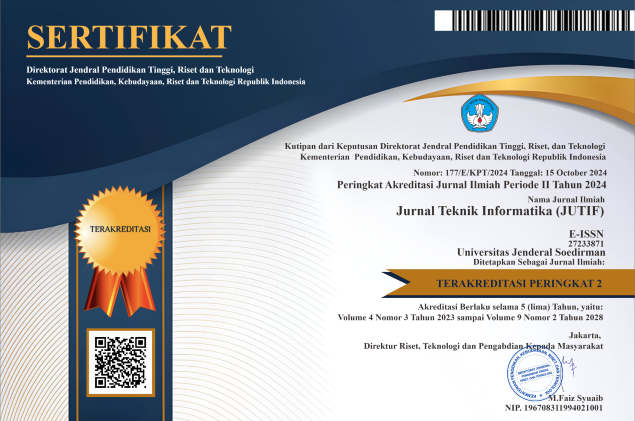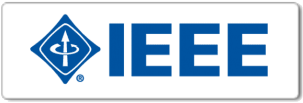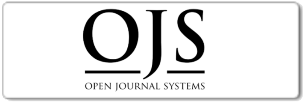Garbage Image Classification Using Deep Learning: A Performance Comparison of InceptionResNetV2 vs ResNet50
DOI:
https://doi.org/10.52436/1.jutif.2025.6.4.4770Keywords:
Deep Learning, Garbage Classification, InceptionResNet, ResNet50Abstract
Garbage problem is a worldwide problem. Efforts to address garbage problem have been performed in several aspect, including automatic garbage classification to support automatic garbage sortation in small scale. In the field of garbage classification, deep learning has been widely used because of its ability to learn feature and also to classify with high accuracy. Several promising architectures in deep learning such as ResNet50 and InceptionNet have been used for this classification task. InceptionResNet is introduced to combine the strength of both architectures. This research aims to classify Garbage Classification data set which consist of 15150 images from 12 classes by using InceptionResNetV2 architecture. In addition, experiment by using ResNet-50 is also performed to provide comparison of its performance. During experiment, Hyperparamater tuning was performed, namely the learning rate, dropout rate, and the number of neuron in the dense layer. The results show that InceptionResNetV2 outperform ResNet50 in all scenarios. This architecture is able to achieve highest accuracy of 97.54%. Even though the classification time is longer for InceptionResNetV2, this finding is able to prove the outstanding performance of InceptionResNetV2 in garbage classification. This study contributes to the field of garbage classification by introducing robust and better model for better classification.
Downloads
References
T. W. Bank, “What a Waste 2.0: A Global Snapshot of Solid Waste Management to 2050,” The World Bank, 2018. [Online]. Available: https://datatopics.worldbank.org/what-a-waste
S. ; L. U. Purnama, “ Environment Ministry applies circular economy for waste management.”
J. R. Jambeck et al., “Plastic waste inputs from land into the ocean,” Science (1979), vol. 347, no. 6223, pp. 768–771, 2015, doi: 10.1126/science.1260352.
J. Prajapati, K. Ribadiya, Y. Shah, K. Patel, B. Patel, and V. Vadhavana, “A Comparative Analysis of Garbage Classification Using ResNet50, Xception and DenseNet121 Architecture: A Review,” in Lecture Notes in Networks and Systems, 2024, pp. 383–402. doi: 10.1007/978-981-97-2053-8_29.
E. T. Yasin and M. Koklu, “A comparative analysis of machine learning algorithms for waste classification: inceptionv3 and chi-square features,” International Journal of Environmental Science and Technology, 2024, doi: 10.1007/s13762-024-06233-z.
W. Yanyan, W. Yajie, W. Chenglei, and S. Yinghao, “A Novel Garbage Images Classification Method Based on Improved VGG,” in 2022 34th Chinese Control and Decision Conference (CCDC), 2022, pp. 1571–1575. doi: 10.1109/CCDC55256.2022.10034310.
T. Gupta et al., “A deep learning approach based hardware solution to categorise garbage in environment,” Complex & Intelligent Systems, vol. 8, no. 2, pp. 1129–1152, 2022, doi: 10.1007/s40747-021-00529-0.
C. Szegedy, S. Ioffe, and V. Vanhoucke, “Inception-v4, Inception-ResNet and the Impact of Residual Connections on Learning,” CoRR, vol. abs/1602.07261, 2016, [Online]. Available: http://arxiv.org/abs/1602.07261
M. Park et al., “Deep Learning-Based Precision Analysis for Acrosome Reaction by Modification of Plasma Membrane in Boar Sperm,” Animals, vol. 13, p. 2622, Aug. 2023, doi: 10.3390/ani13162622.
M. Mohamed, “Garbage Classification (12 classes),” 2021. Accessed: Apr. 28, 2025. [Online]. Available: https://www.kaggle.com/datasets/mostafaabla/garbage-classification
J. Deng, W. Dong, R. Socher, L.-J. Li, K. Li, and L. Fei-Fei, “ImageNet: A large-scale hierarchical image database,” in 2009 IEEE Conference on Computer Vision and Pattern Recognition, 2009, pp. 248–255. doi: 10.1109/CVPR.2009.5206848.
S. Li, L. Wang, J. Li, and Y. Yao, “Image Classification Algorithm Based on Improved AlexNet,” J Phys Conf Ser, vol. 1813, p. 12051, Apr. 2021, doi: 10.1088/1742-6596/1813/1/012051.
P. A. Nugroho, I. Fenriana, and R. Arijanto, “IMPLEMENTASI DEEP LEARNING MENGGUNAKAN CONVOLUTIONAL NEURAL NETWORK ( CNN ) PADA EKSPRESI MANUSIA,” ALGOR, vol. 2, no. 1, pp. 12–20, Nov. 2020, [Online]. Available: https://jurnal.ubd.ac.id/index.php/algor/article/view/441
K. He, X. Zhang, S. Ren, and J. Sun, “Deep Residual Learning for Image Recognition,” 2015. [Online]. Available: https://arxiv.org/abs/1512.03385
C. Szegedy, S. Ioffe, V. Vanhoucke, and A. Alemi, “Inception-v4, Inception-ResNet and the Impact of Residual Connections on Learning,” 2016. [Online]. Available: https://arxiv.org/abs/1602.07261
M. Elpeltagy and H. Sallam, “Automatic prediction of COVID- 19 from chest images using modified ResNet50,” Multimed Tools Appl, vol. 80, no. 17, pp. 26451–26463, 2021.
M. B. Hossain, S. M. H. S. Iqbal, M. M. Islam, M. N. Akhtar, and I. H. Sarker, “Transfer learning with fine-tuned deep CNN ResNet50 model for classifying COVID-19 from chest X-ray images,” Inform Med Unlocked, vol. 30, p. 100916, 2022.
N. Dominic, T. W. Cenggoro, A. Budiarto, B. Pardamean, and others, “Transfer learning using inception-ResNet-v2 model to the augmented neuroimages data for autism spectrum disorder classification,” Commun. Math. Biol. Neurosci., vol. 2021, p. Article–ID, 2021.
J. Wang, X. He, S. Faming, G. Lu, H. Cong, and Q. Jiang, “A real-time bridge crack detection method based on an improved inception-resnet-v2 structure,” IEEE Access, vol. 9, pp. 93209–93223, 2021.
A. Dash and P. Mohapatra, “A Fine-tuned deep convolutional neural network for chest radiography image classification on COVID-19 cases,” Multimed Tools Appl, vol. 81, pp. 1–21, Apr. 2022, doi: 10.1007/s11042-021-11388-9.
W. Zhao, W. Jiang, and X. Qiu, “Fine-Tuning Convolutional Neural Networks for COVID-19 Detection from Chest X-ray Images,” Diagnostics, vol. 11, p. 1887, Apr. 2021, doi: 10.3390/diagnostics11101887.
Y. Wang, Z. Haoxin, and G. Zhang, “cPSO-CNN: An efficient PSO-based algorithm for fine-tuning hyper-parameters of convolutional neural networks,” Swarm Evol Comput, vol. 49, pp. 114–123, Apr. 2019, doi: 10.1016/j.swevo.2019.06.002.
M. Subramanian, K. Shanmugavadivel, and P. Nandhini, “On fine-tuning deep learning models using transfer learning and hyper-parameters optimization for disease identification in maize leaves,” Neural Comput Appl, vol. 34, Apr. 2022, doi: 10.1007/s00521-022-07246-w.
L. Ciampiconi, A. Elwood, M. Leonardi, A. Mohamed, and A. Rozza, “A survey and taxonomy of loss functions in machine learning,” 2024. [Online]. Available: https://arxiv.org/abs/2301.05579
T. Yu and H. Zhu, “Hyper-Parameter Optimization: A Review of Algorithms and Applications,” 2020. [Online]. Available: https://arxiv.org/abs/2003.05689
S. Gupta, “A Comprehensive Study of Hyperparameter Optimization in Deep Learning Models Using Bayesian Optimization,” SSRN Electronic Journal, Apr. 2024, doi: 10.2139/ssrn.4958505.
P. N. Andono and T. Sutojo, Pengolahan Citra Digital. Andi Publisher, 2018. [Online]. Available: https://books.google.co.id/books?id=zUJRDwAAQBAJ
Additional Files
Published
How to Cite
Issue
Section
License
Copyright (c) 2025 Rismiyati, Axelliano Rafael Situmeang, Khadijah, Sukmawati Nur Endah

This work is licensed under a Creative Commons Attribution 4.0 International License.



























